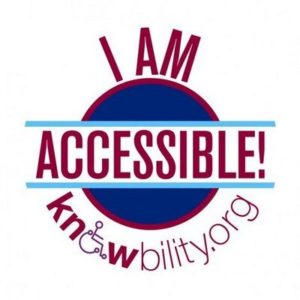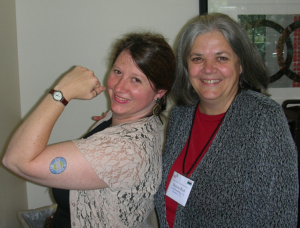
The Last Virtual Volunteering Guidebook: Fully Integrating Online Service Into Volunteer Involvement was published in early 2014. Now, six years later, is it still relevant? Oh, yes… I know because I’ve been testing all the principles offered in it over and over since it was published (as well as before it was published, when I was still writing it). My latest test: working with more than 150 online volunteers that participated in Knowbility’s 2019 Accessibility Internet Rally.
The book is the result of more than 20 years of research and practical experience by me, with heavy advice and observations by the book’s co-author, Susan Ellis. When we wrote the book, we wanted it to be timeless, like so many of Susan’s own books about various aspects of volunteer management. It’s not that I don’t still have things to learn about working with volunteers, online or off – I do! We all do. It’s that we believed strongly that certain principles would not change, and would be easily adapted no matter how the technology or even society evolved. These were principles that were explored in-depth at a variety of organizations when I managed the Virtual Volunteering Project at the University of Texas at Austin back in the 1990s, and they continue to be explored and tested – and proven.
For instance, I learned in the 1990s that the easier I made it for volunteers to sign up to volunteer, the larger the percentage of those volunteers that dropped out without even starting the assignment, let alone finishing it. But just putting in a simple second step that a candidate had to complete before they got to start on the assignment screened out the people who didn’t understand this was REAL volunteering and screened in the people who would take it seriously. It was true in 1998 and it’s true NOW, more than 20 years later.
I learned early on in studying virtual volunteering, a practice that’s been happening since the 1970s, and in working with online volunteers myself in the 1990s, that volunteers need to feel supported and valued or they won’t finish an assignment, or won’t finish it with the quality needed by an organization. In my role with Knowbility this time, I came on very late in the rally process, and because of that, trying to build trusting relationships with the volunteers that were already on board and get answers quickly to their questions proved quite difficult. The problems I have had with volunteers and that they had with their participation can almost all be traced back to that situation.
I learned early on, many years ago, that having expectations of volunteers in writing, online, both in role descriptions and in policies and procedures, was KEY to ensure both volunteers and managers are all on the same page as far as what’s happening and what’s needed, don’t get conflicting information, have a common place to look for guidance, etc. It greatly reduces conflict and misunderstandings, two factors which can lead to a lot of problems in volunteer engagement. Everyone isn’t going to read absolutely all of the support materials, but having it for referral is amazing in getting questions answered and conflicts resolved quickly. This lesson has been reinforced over and over over the years, including during this Knowbility event.
I’m thrilled to know my book is still relevant!
I have more than 100 hard copies of The Last Virtual Volunteering Guidebook in my possession and I would love for you to have one – or more! You can also order an electronic version. Yes, it’s available via Amazon, but let me be frank: I get far, far more money from the sale if you buy directly from me. Please consider doing so – buy one for yourself and for your favorite nonprofit!



 I wrote 80 blogs in 2018, including the one you are reading now. It was a prolific year in terms of writing. No idea why I had so much to say this year.
At the end of each year, I like to review the stats of my blogs and see which were the most read – and which seemed to be overlooked. It’s a review I publish more for me than my blog readers. But note that it’s something you need to be doing with your blog entries as well, so you can look for trends, so you can try to understand why one blog was well-read and another was overlooked, etc.
My top blog in 2018, BY FAR, was this one:
I wrote 80 blogs in 2018, including the one you are reading now. It was a prolific year in terms of writing. No idea why I had so much to say this year.
At the end of each year, I like to review the stats of my blogs and see which were the most read – and which seemed to be overlooked. It’s a review I publish more for me than my blog readers. But note that it’s something you need to be doing with your blog entries as well, so you can look for trends, so you can try to understand why one blog was well-read and another was overlooked, etc.
My top blog in 2018, BY FAR, was this one: 
